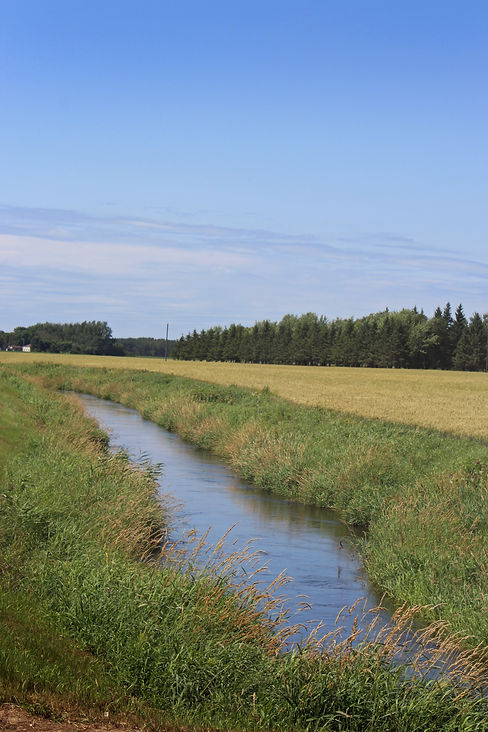
Healthy = Productive
Soils Farmlands
Cass SWCD advocates for farming and grazing practices that rebuild organic topsoil matter and restore degraded soil biodiversity. Our goal is to see productive farmlands, robust soils, and improved water quality.
Cost-Share for Agricultural Programs
Supplemental Forage for Livestock
Supplemental forage refers to additional feed provided to livestock during winter when pasture growth is limited. This can include planting annual cover crops in degraded hay or pasture fields, or planting cover crops in a row crop setting to serve as additional forage. Incorporating livestock into these systems enhances soil health by promoting living biology and improving nutrient cycling.
Key benefits:
-
Extended Growing Season: Provides grazing opportunities beyond the typical season
-
Prolonged Hay Feeding: Reduces the need for early hay, saving costs and managing reserves
-
Nutrient Management: Returns nutrients to the soil, improving soil health and reducing the reliance on synthetic fertilizers
-
Forage Diversity: Enhances pasture biodiversity, benefiting livestock and the environment
Supplemental forages optimize resources and enhance economic and environmental outcomes for livestock producers
Agriculture and Agronomy
There is a growing recognition for the need to regenerate and revitalize farmland soil. Healthy soils produce high quality, nutrient-dense produce. Furthermore, soils filled with strong rooted, organic matter are able to hold larger capacities of moisture. Moisture retention is not only better for crops, but also means less erosion. When the land retains water, it acts as a giant sponge, filtering and absorbing nutrients and contaminants that would otherwise enter water sources. Thriving soils, with abundant organic matter, stack benefits for producers and their neighbors.
Long-Term Thinking
Savvy agricultural professionals understand the significance
of organic matter, including living organisms in the soil. Age-old management practices like conservation tillage, cover
crops, crop rotation, composting, and rotational grazing
have come back into practice.
The reactionary farmer believes most soil-related problems
can be dealt with by using external inputs, aka… fertilizers,
irrigation, subsoilers, or pesticides. But problems like
nutrient deficiencies, minimal moisture retention, compacted
soils, plant disease or insect infestations are often simply
symptoms of underlying problems. Problems that are literally
right beneath our feet... in the soil.
Exhaustion of organic soil matter, and a depletion of a
diverse population of soil organisms is often the source of
agricultural difficulties. Your local SWCD focuses on general
soil health management and the strength of natural biological
systems, which go a long way to preventing many
agricultural issues.


Soil Health Principle #1
MINIMIZE SOIL DISTURBANCE
Over time, tillage reduces the pore spaces in soils; restricting infiltration and destroying biological glues. Limiting soil disturbance helps rebuild soil aggregates, pore spaces, soil glue, and organic matter. This is an essential step for long term soil productivity.
Soil Health Principle #2
KEEP SOIL COVERED
After a crop is harvested, the soil may be bare until the next crop is planted. In the North, the next planting may be 5-7 months away. That's a long time for soil to be left bare. Cover crops will protect farmland during this vulnerable period.


Soil Health Principle #3
MAINTAIN LIVING ROOTS
Healthy plant roots are essential for good crop yields. Roots are good indicators of soil quality. Root systems help bind particles together. Furthermore, organic compounds are exuded by roots to provide nourishment for soil organisms.
Soil Health Principle #4
PROMOTE SOIL BIODIVERSITY
Biodiversity is the driver of healthy soils. Soil biodiversity is the web of biological activity below-ground . It improves water retention, aids in resisting soil erosion, and helps plant nutrition, while controlling soil pests and disease.


Soil Health Principal #5
INTEGRATE LIVESTOCK
Animals, plants and soils have played a synergistic role together over geological time. In recent years, animals are playing a reduced role due to being placed in confinement and fewer farms now include livestock as part of their overall operation.

BUFFER LAW
Conservation buffers are best described as strips or other areas of land in permanent vegetation that help control pollutants, mitigate the movement of sediment, nutrients, and pesticides within farm fields and from farm fields. Filter strips, riparian buffers (predominantly trees and shrubs next to water courses), field borders, grassed waterways, field windbreaks, shelterbelts, and contour grass strips are all examples of conservation buffers. The small amount of land taken out of production helps producers meet envirornmental and economic goals.
Buffers can be especially helpful to you in maintaining a productive, profitable, and responsible farming or ranching operation.
Today, America's farms and ranches do more
than produce crops and livestock. They play an important role in maintaining the environmental quality enjoyed by all citizens. Conservation buffers can help you protect soil, air, and water quality and improve fish and wildlife habitat... while you demonstrate your commitment to
land stewardship.




Site Visit Request
Request a site visit with a conservation technician. Find out how your property can make a difference.
Fill out the request form or call the number below.
